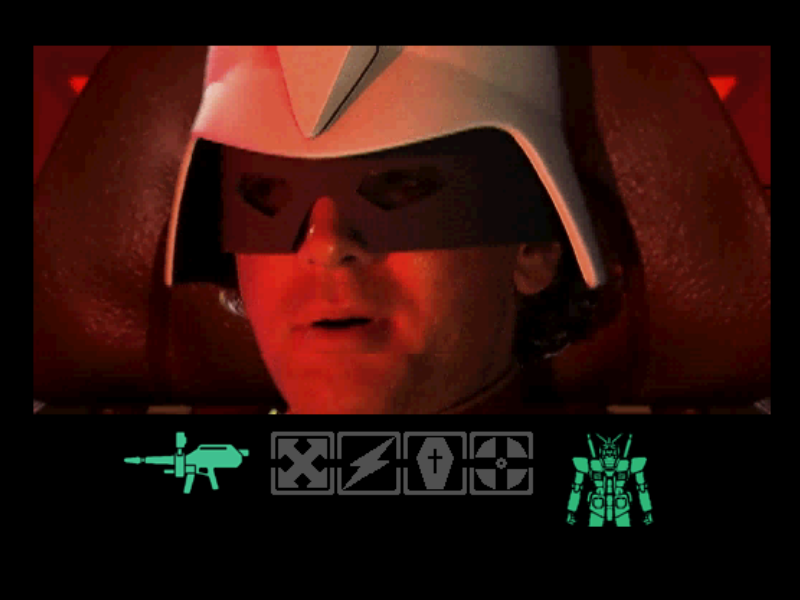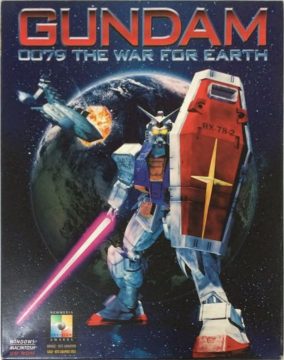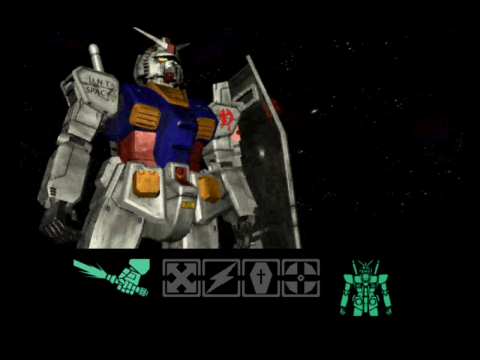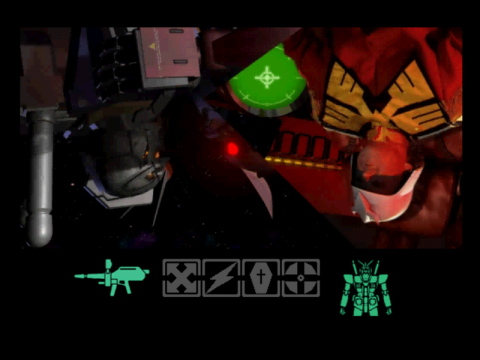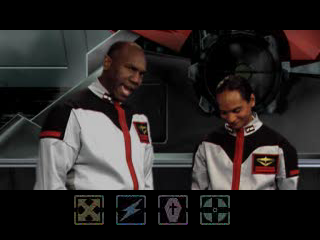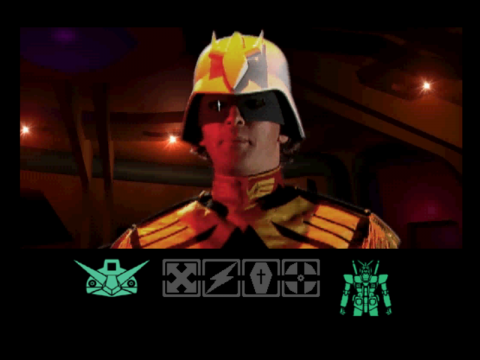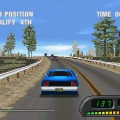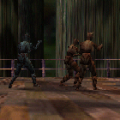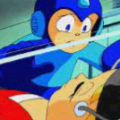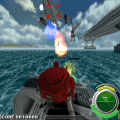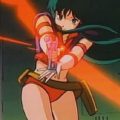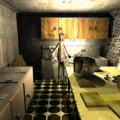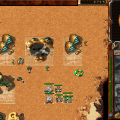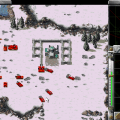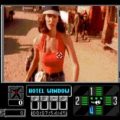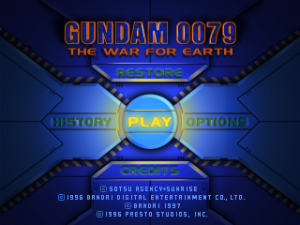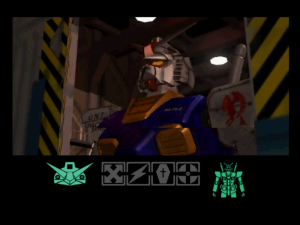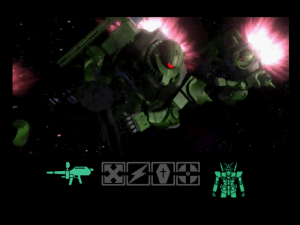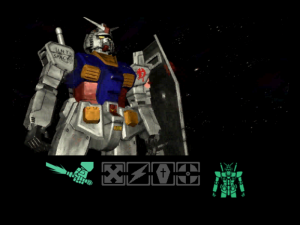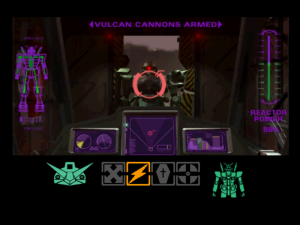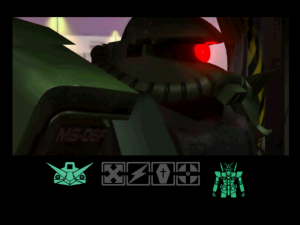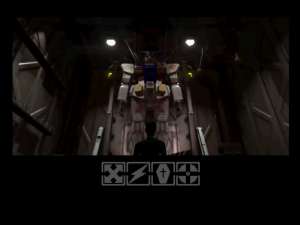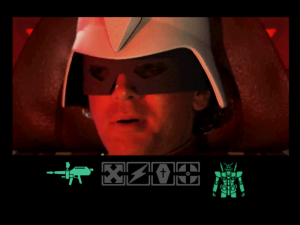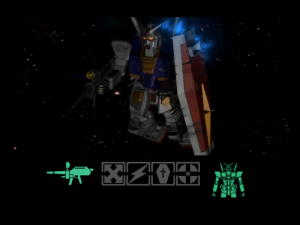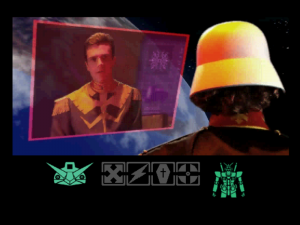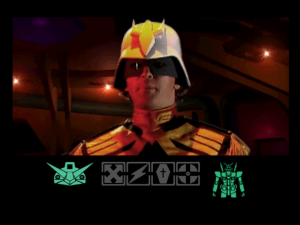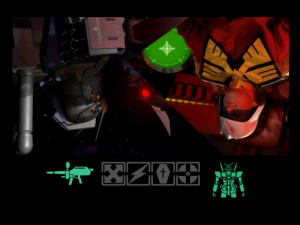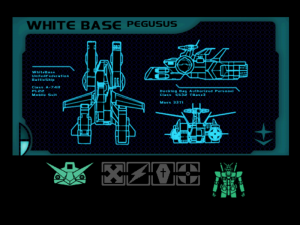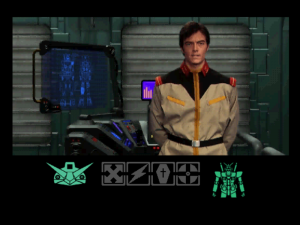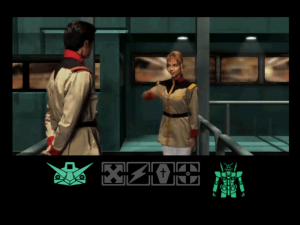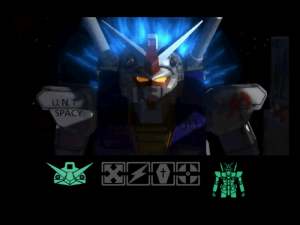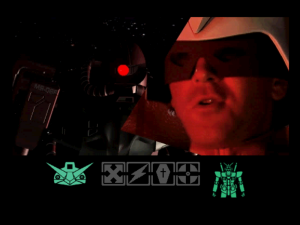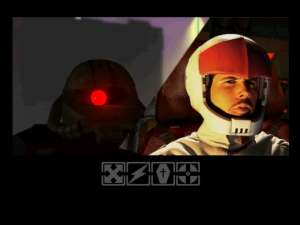Mobile Suit Gundam is one of the most influential anime series ever created, establishing many of the conventions of the mecha subgenre. In the forty-plus years of its existence, there have been dozens of series and spinoffs, but they generally boil down to political drama involving Earth and its space colonies, featuring a super powerful giant robot called a Gundam. Among the many, many video game tie-ins, one of the most unusual is this CD-ROM FMV title, a co-production between Japanese studio Bandai and American developer Presto Studios, the team behind The Journeyman Project titles. It was originally developed for the short-lived Apple Pippin platform, which Bandai was an ardent supporter of, but was also ported to Windows and Macintosh platforms, as well as the Japanese PlayStation.
Based on the original Mobile Suit Gundam TV series from 1979, you’re put into the role of an average space colonist who stumbles upon an abandoned Gundam, and are then conscripted by the Earth federation to fight against the separatist forces of Zeon. The game can be beaten in about thirty minutes, so obviously the Gundam storyline is heavily compressed, covering approximately the first ten episodes or so.
While most of the time is spent watching the video, when prompted, you can perform four different actions – move, fight, defend, and interact, plus you can pick from a few weapons. However, this isn’t just a reaction game, as you’re sometimes given more than one option. For example, when fighting your first enemy mecha, you can fight or defend. Which is the correct one, and which weapon to use? You’ll only know by experimenting, which means you’ll likely die a few times. The computer versions let you save at any time, but it doesn’t offer automatic checkpoints. The PlayStation doesn’t let you save at all, but instead chops the game up into chapters and lets you resume progress with a password. The computer version is much less painless, but in either case, there’s no way to skip any footage, so upon failure you’ll be watching and rewatching the same footage. It’s maddening! The action is occasionally broken up into shooting gallery scenes, and segments where you’re given a 360-degree view and need to look for items or move around. Neither of these are any more compelling.
As for the FMV itself, the backgrounds and mecha are computer rendered, while the characters are real-life actors, both a stark contrast from typical hand drawn Gundam anime. The CG is excellent for the mid-1990s, but the live action stuff is hilariously bad, doubly so if you’re familiar with the original anime. The most egregious is Char, one of the most famous antagonists in anime history, who’s reduced here to a middle-aged community theater actor in a bad Halloween costume. The funniest scene is one where he grabs your mecha while they’re flipped, and the FMV cut-in footage is also upside down. But there’s no gravity in space so their orientation shouldn’t even matter, not to mention that it looks incredibly silly!
The best character is Bright Noa, the commander of White Base, the battleship you’re assigned to. The actor looks like a reasonable representation of the anime character, and while he’s much, much nicer here than in the anime, the acting is reasonably well done. Other appearances have changed wildly, like Ryu Jose, now renamed Duke, who went from a chubby Hispanic guy to a balding black man. (Though to be fair, Gundam series creator Yoshiyuki Tomino commented that he originally wanted Ryu to be African-American, but had to change it due to complaints from the TV networks. So in a roundabout way, it is a little more accurate to the series creator’s original intentions.) A few other characters pop up but seem to be original creations, like a woman who seems like she should be Sayla Mass but is instead renamed Sarah.
Anime protagonist Amuro Ray doesn’t appear at all, since technically the player is taking on his role, even if the circumstances of how you find the empty Gundam are a bit different. Since the protagonist here is unnamed, the other characters occasionally refer to them as “Gundam”, sounding like it’s his name. It’s also hilarious how the Gundam is supposed to be this incredibly powerful mecha, yet it seems to have the durability of a tin can, considering how often you’ll likely screw it and get it destroyed. Many, many other inconsistencies have been found throughout, and naturally have been documented by Japanese fans, who find this game absolutely bonkers.
This is also one of the first Gundam products to be released in English, and the terminology is different from the later anime localizations, so “Zeon” is pronounced like “Jeanne” and enemy Zaku mechas are called “Zacks”. Char’s name is also spelled “Shar”. It should be noted that none of these terms are technically wrong based on the original Japanese. But when Bright Noa commands you to watch out for some “Jeanne Zacks”, anyone who’s familiar with the anime will be wondering what the hell he’s talking about. In all of the Japanese versions, the original anime voice actors dub over all of the dialogue, so the only way to hear the original (mostly painful) acting is in the extremely rare North American computer versions.
This game is one mismanaged mess, but familiarity with the show and its story, lore, and characters will make its sins even more egregious. Incidentally, Gundam would try live action a few years later with the Canadian-produced TV series G-Saviour, to only slightly better reception.
